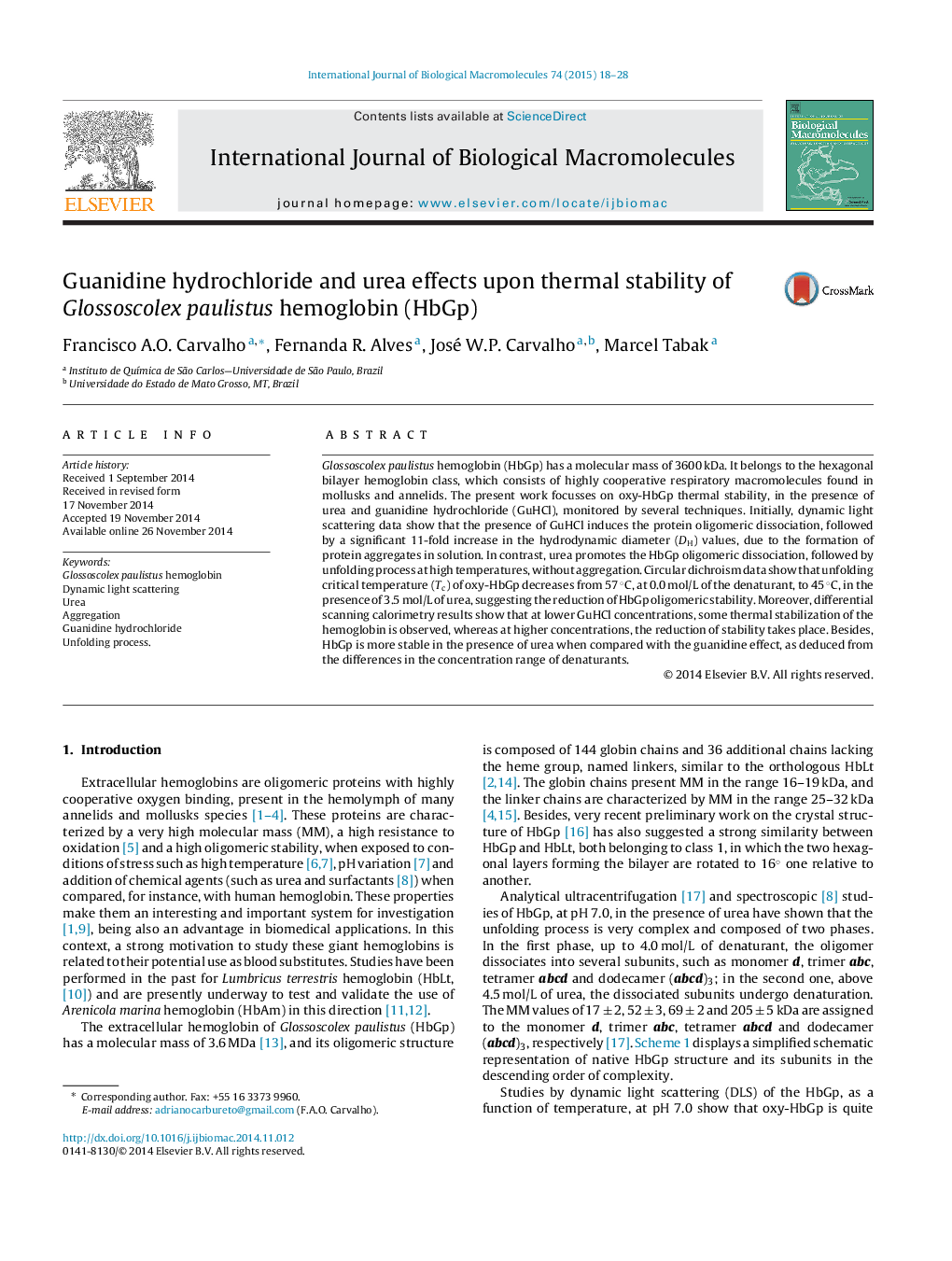| Article ID | Journal | Published Year | Pages | File Type |
|---|---|---|---|---|
| 8331629 | International Journal of Biological Macromolecules | 2015 | 11 Pages |
Abstract
Glossoscolex paulistus hemoglobin (HbGp) has a molecular mass of 3600 kDa. It belongs to the hexagonal bilayer hemoglobin class, which consists of highly cooperative respiratory macromolecules found in mollusks and annelids. The present work focusses on oxy-HbGp thermal stability, in the presence of urea and guanidine hydrochloride (GuHCl), monitored by several techniques. Initially, dynamic light scattering data show that the presence of GuHCl induces the protein oligomeric dissociation, followed by a significant 11-fold increase in the hydrodynamic diameter (DH) values, due to the formation of protein aggregates in solution. In contrast, urea promotes the HbGp oligomeric dissociation, followed by unfolding process at high temperatures, without aggregation. Circular dichroism data show that unfolding critical temperature (Tc) of oxy-HbGp decreases from 57 °C, at 0.0 mol/L of the denaturant, to 45 °C, in the presence of 3.5 mol/L of urea, suggesting the reduction of HbGp oligomeric stability. Moreover, differential scanning calorimetry results show that at lower GuHCl concentrations, some thermal stabilization of the hemoglobin is observed, whereas at higher concentrations, the reduction of stability takes place. Besides, HbGp is more stable in the presence of urea when compared with the guanidine effect, as deduced from the differences in the concentration range of denaturants.
Keywords
Related Topics
Life Sciences
Biochemistry, Genetics and Molecular Biology
Biochemistry
Authors
Francisco A.O. Carvalho, Fernanda R. Alves, José W.P. Carvalho, Marcel Tabak,
